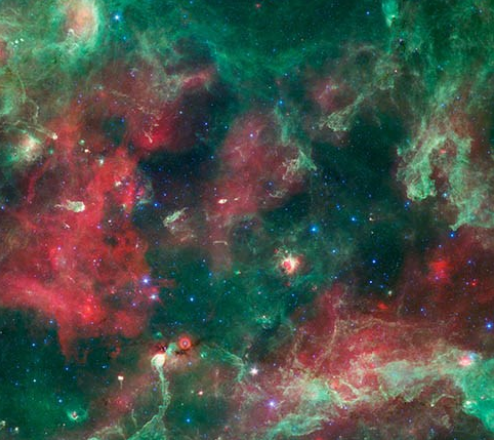Data
Low-mass supernova triggered the formation of our solar system

A research team led by JINA-CEE member Yong-Zhong Qian (UM) uses new models and evidence from meteorites to show that a low-mass supernova triggered the formation of our solar system. The findings are published in the most recent issue of Nature Communications.
About 4.6 billion years ago, a cloud of gas and dust that eventually formed our solar system was disturbed. The ensuing gravitational collapse formed the proto-Sun with a surrounding disc where the planets were born. A supernova would have enough energy to compress such a gas cloud, yet there was no conclusive evidence to support this theory. In addition, the nature of the triggering supernova remained elusive.
Qian and his collaborators focused on short-lived nuclei present in the early solar system. Due to their short lifetimes, these nuclei could only have come from the triggering supernova. Their abundances in the early solar system have been inferred from their decay products in meteorites. As the debris from the formation of the solar system, meteorites are comparable to the leftover bricks and mortar in a construction site. They tell us what the solar system is made of and in particular, what short-lived nuclei the triggering supernova provided.
Previous efforts in studying the formation of the solar system were focused on a high-mass supernova trigger, which would have left behind a set of nuclear fingerprints that are not present in the meteoric record. Hence, Qian and his collaborators decided to test whether a low-mass supernova, about 12 times heavier than our sun, could explain the meteoritic record. They began their research by examining Beryllium-10, a short-lived nucleus that is widely distributed in meteorites.
In fact the ubiquity of Beryllium-10 was something of a mystery in and of itself. Many researchers had theorized that spallation—a process where high-energy particles strip away protons or neutrons from a nucleus to form new nuclei— by cosmic rays was responsible for the Beryllium-10 found in meteorites. However, this hypothesis involves uncertain inputs and presumes that Beryllium-10 cannot be made in supernovae. Using new models of supernovae, the researchers have shown that Beryllium-10 can be produced by neutrino spallation in supernovae of both low and high masses. However, only a low-mass supernova triggering the formation of the solar system is consistent with the overall meteoritic record.
In addition to explaining the abundance of Beryllium-10, this low-mass supernova model would also explain the shortlived nuclei Calcium-41, Palladium-107, and a few others found in meteorites. The next step is to further corroborate the theory by looking at Lithium-7 and Boron-11 that are produced along with Beryllium-10 by neutrino spallation in supernovae. Qian said they may examine this in a future paper and urged researchers studying meteorites to look at the correlations among these three nuclei with precise measurements.
